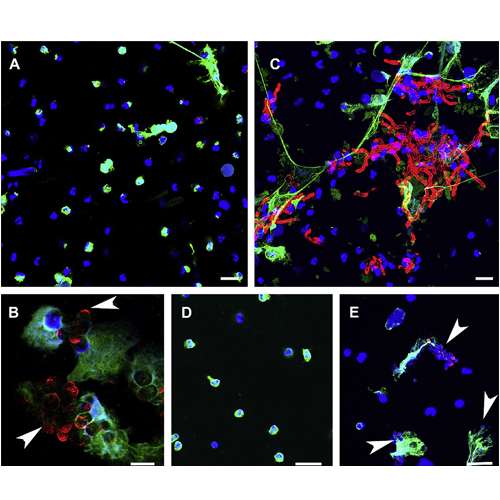NETs formed by human neutrophils inhibit growth of the pathogenic mold Aspergillus fumigatus
17-Jul-2010
Microbes and Infection, 2010, doi:10.1016/j.micinf.2010.06.009, Volume 12, Pages 928-936 published on 17.07.2010
Microbes and Infection, online article
Microbes and Infection, online article
Neutrophil extracellular traps (NETs) represent a distinct mechanism to control and eliminate microbial infections. Our results show that conidia and germ tubes of the human pathogenic mold Aspergillus fumigatus are able to trigger the formation of NETs. Viable fungal cells are not essentially required for this hostepathogen interaction. Neutrophils engulf conidia and thereby inhibit their germination, a process that is independent of NETosis. In the experimental set-up used in this study neutrophils do not kill germ tubes, but reduce their polar growth and this inhibition depends on NETs as it can be overcome by the addition of DNase-1. The Zn2þ chelator calprotectin is associated with the Aspergillus- induced NETs and addition of Zn2þ abrogates the NET-mediated growth inhibition. In summary, our data provide evidence that NETs are not sufficient to kill A. fumigatus, but might be a valuable tool to confine infection.











